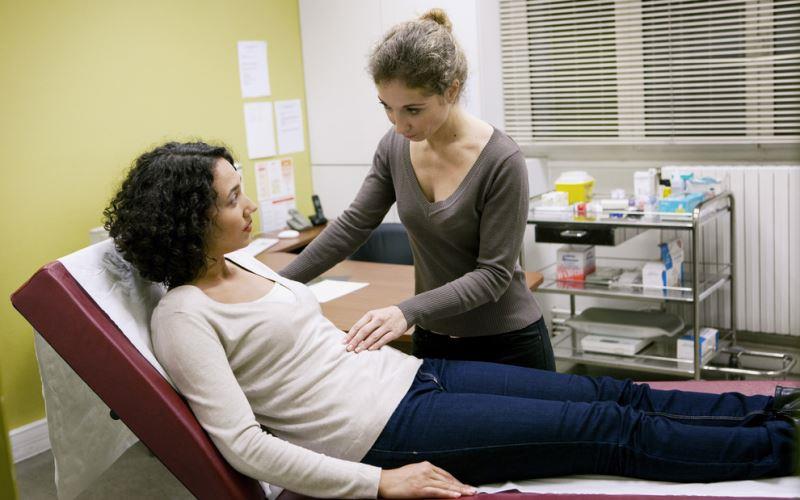
Multiple fetal abnormalities if you are further along (in the second trimester).Changes in the shape of the gestational sac.A placenta with one or more abnormalities.An unexpectedly small fetus for the gestational age.Or the ultrasound may show these signs of a partial molar pregnancy: For cases that don't end up in first trimester miscarriage, a later, anatomy ultrasound will be abnormal with severe growth restriction and multiple birth defects. A partial mole is more difficult to diagnose early on, because the ultrasound may appear normal in the first trimester. A complete mole is generally diagnosed in the first trimester on ultrasound because of the classic appearance of a "snowstorm" pattern and lack of a fetus. Levels of the hormone hCG are typically higher than normal in a molar pregnancy.

Molar pregnancy is usually diagnosed with a combination of one or more of these: However, because ultrasound helps practitioners diagnose molar pregnancies earlier these days, it's rare to carry one long enough for this condition to develop.Ĭall your doctor or midwife right away if you have any spotting or bleeding or other symptoms of a molar pregnancy. Some women develop very early-onset preeclampsia around mid-pregnancy if they have an undiagnosed molar pregnancy.

In normal pregnancies, the fertilized egg contains 23 chromosomes from the father and 23 from the mother. (This has been associated with complete moles but not partial moles.)Ī molar pregnancy happens when there are certain problems with the genetic information (the chromosomes) in the fertilized egg at conception. Low levels of dietary carotene (vitamin A) and animal fat.Difficulty with fertility is associated with double the risk of a complete mole and three times the risk of a partial mole. Still, most people with miscarriages – even multiple miscarriages – will never develop a mole. The risk of a molar pregnancy increases two- to three-fold compared to women without a history of prior miscarriage. The risk of a repeat mole is about one percent after one mole (10 to 20 percent more than the risk for the general population) and 15 to 20 percent after two moles. (Age is a risk factor for complete molar pregnancies but not partial molar pregnancies.) Your risk of complications is higher if you're older than 40. You're more likely to have a molar pregnancy if you: Only about 1 in 1,000 pregnancies in the United States is a molar pregnancy.


 0 kommentar(er)
0 kommentar(er)
